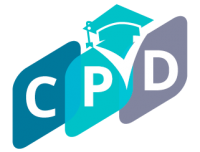Reading is an essential skill that plays a fundamental role in learning and personal growth. However, merely scanning through the lines of a text may not be sufficient for meaningful understanding and retention of information. Active reading strategies enable readers to engage with the material, comprehend complex concepts, and make connections between ideas. In this article, we will explore various active reading techniques that enhance comprehension and engagement, making the reading experience more enriching and impactful.
1. Pre-Reading Preparation
Before diving into a text, take a few moments to prepare for active reading. Skim through the chapter or section headings, subheadings, and any bold or italicized text. This pre-reading process helps to develop a mental framework of the content and sets the stage for better comprehension.
2. Set Reading Goals
Establish clear reading goals before delving into the material. Ask yourself what you want to gain from the text. Whether it’s understanding a specific concept, gathering information for a project, or simply enjoying the content, setting goals keeps you focused and motivated throughout the reading process.
3. Annotate and Highlight
While reading, interact with the text by annotating and highlighting key points, unfamiliar terms, and important ideas. Jot down your thoughts, questions, and reflections in the margins or a separate notebook. These annotations serve as valuable reference points during review sessions or discussions.
4. Visualize and Summarize
Create mental images of the concepts being discussed. Visualizing ideas helps in forming a deeper understanding of the material. Additionally, summarize the main points or arguments after reading each section. This practice reinforces comprehension and aids in retention.
5. Ask Questions
As you read, engage with the text by asking questions. Questioning the material prompts critical thinking and encourages active participation in the reading process. Try to answer these questions based on the information presented in the text.
6. Make Connections
Connect the material to your existing knowledge or experiences. Relating new information to what you already know facilitates understanding and helps you grasp complex concepts more effectively. Look for similarities, differences, and patterns between the new information and your prior knowledge.
7. Engage in Dialogue
Imagine a conversation with the author or characters of the text. This technique helps you internalize the material and gain insights into the author’s perspective. Engaging in a dialogue with the content encourages a deeper connection with the text.
8. Reflect on Personal Relevance
Consider how the material relates to your life, interests, or career aspirations. Recognizing the personal relevance of the content fosters a genuine interest in the reading material and strengthens your motivation to comprehend it thoroughly.
9. Take Breaks
Reading for an extended period can lead to fatigue and reduced focus. Take short breaks during the reading process to refresh your mind and maintain concentration. Use these breaks to review your annotations and summaries.
10. Discuss with Others
Engage in discussions with classmates, friends, or colleagues about the reading material. Verbalizing your understanding and listening to others’ perspectives enhances comprehension and broadens your understanding of the content.
11. Revisit Challenging Sections
If you encounter challenging sections, don’t hesitate to reread them for better comprehension. Break down complex sentences or concepts into smaller parts and analyze them step by step.
12. Use Graphic Organizers
Organize information using graphic organizers such as concept maps, mind maps, or flowcharts. These visual representations help in connecting ideas and clarifying the relationships between different concepts.
13. Teach Others
The best way to consolidate your understanding of a topic is to teach it to someone else. Share the key points, insights, and connections you made during your active reading process with a peer or family member. Teaching others reinforces your own understanding and helps you identify areas that need further review.
14. Review Regularly
Schedule regular review sessions to reinforce your understanding of the material. Frequent revisiting of the content aids in long-term retention and prevents forgetting.
15. Celebrate Progress
Acknowledge your progress and improvements in active reading. Celebrate your achievements, whether it’s grasping a challenging concept, finishing a lengthy chapter, or developing a habit of active reading.
By incorporating these active reading strategies into your learning routine, you can enhance comprehension, engagement, and retention of the material. Active reading not only helps you perform better academically but also enriches your overall reading experience and promotes a lifelong love for learning.
